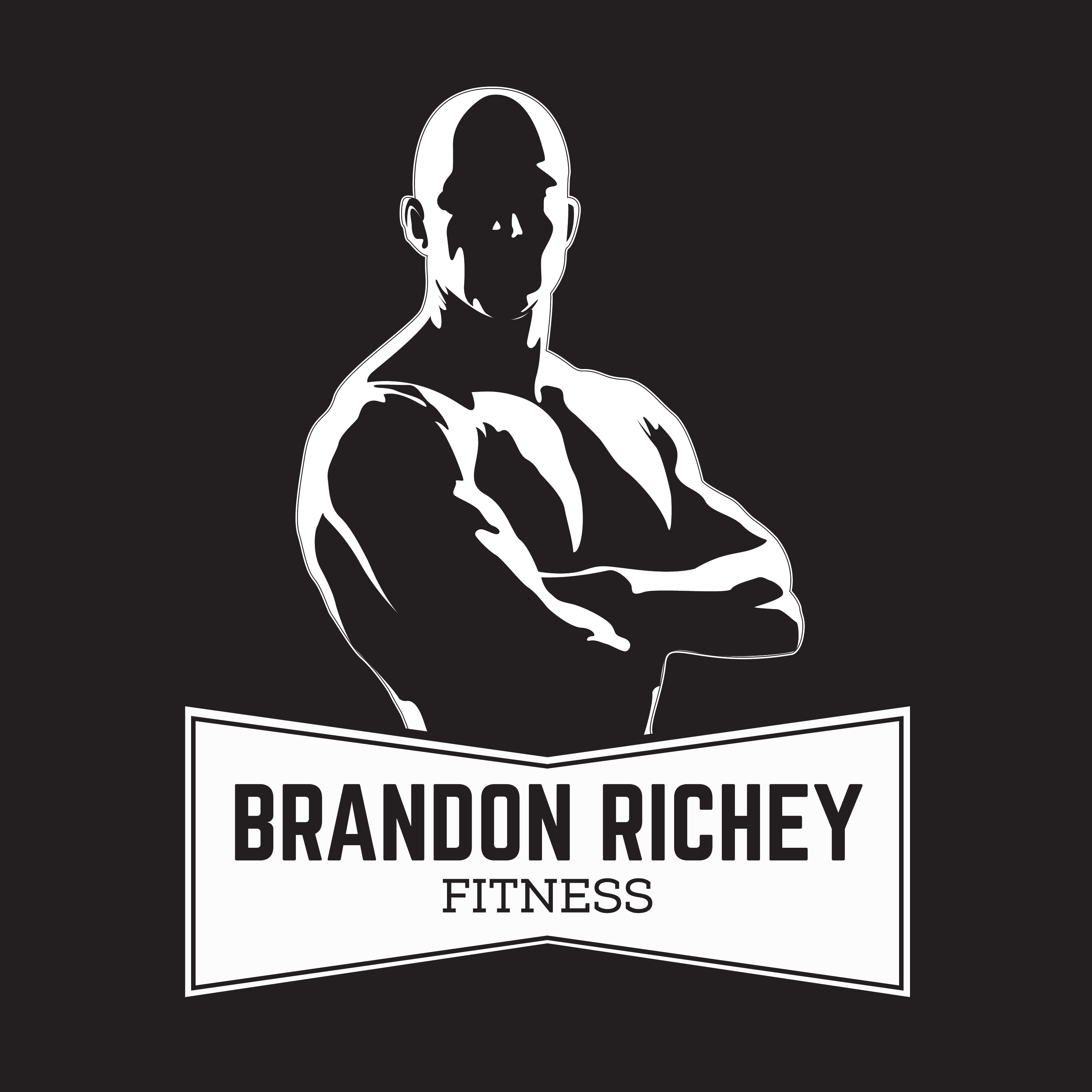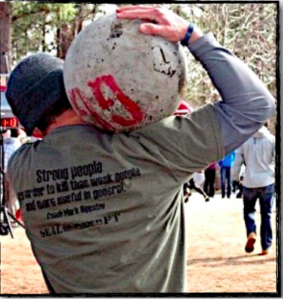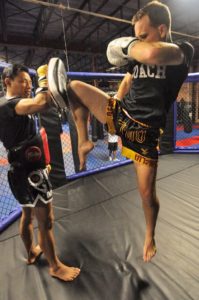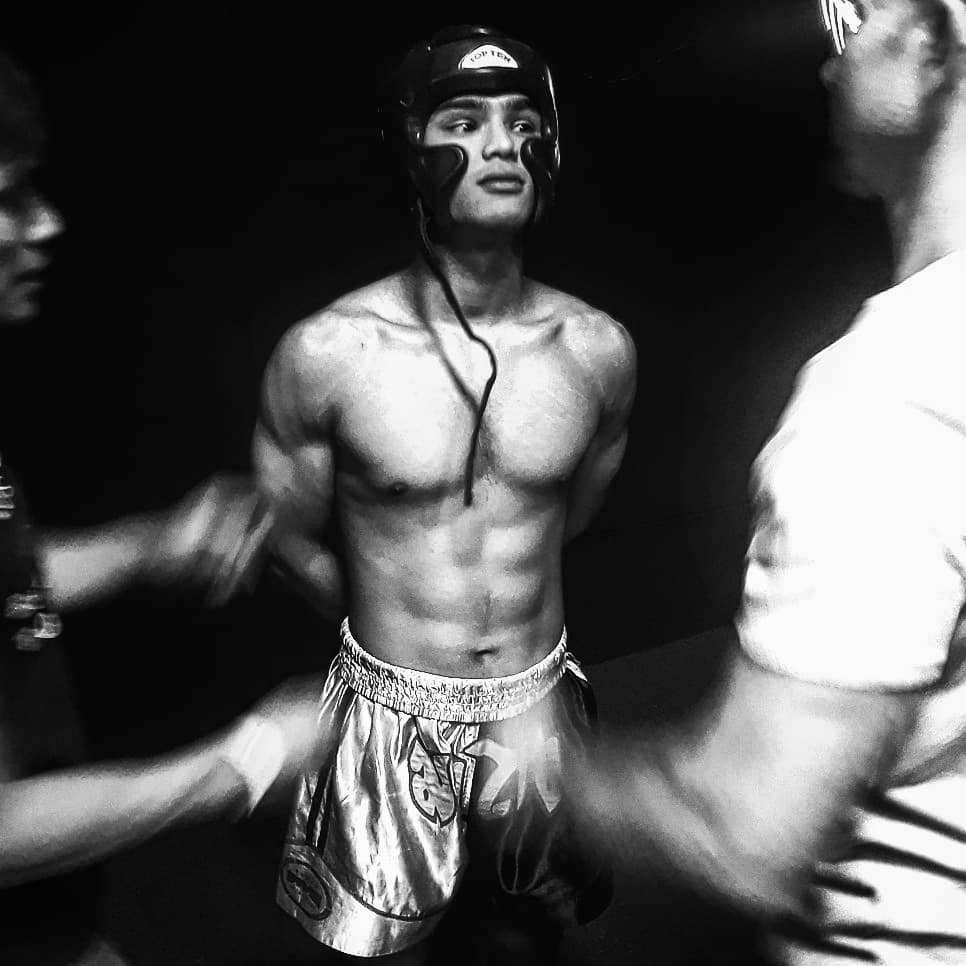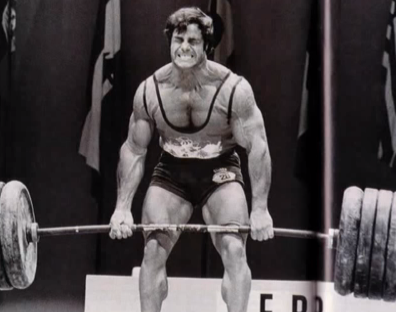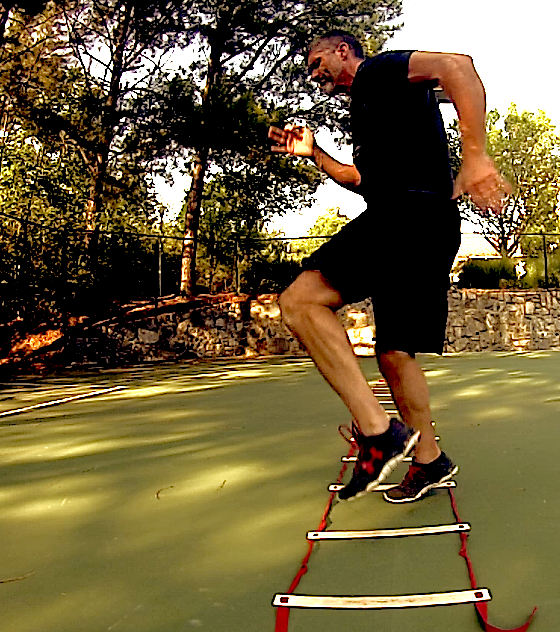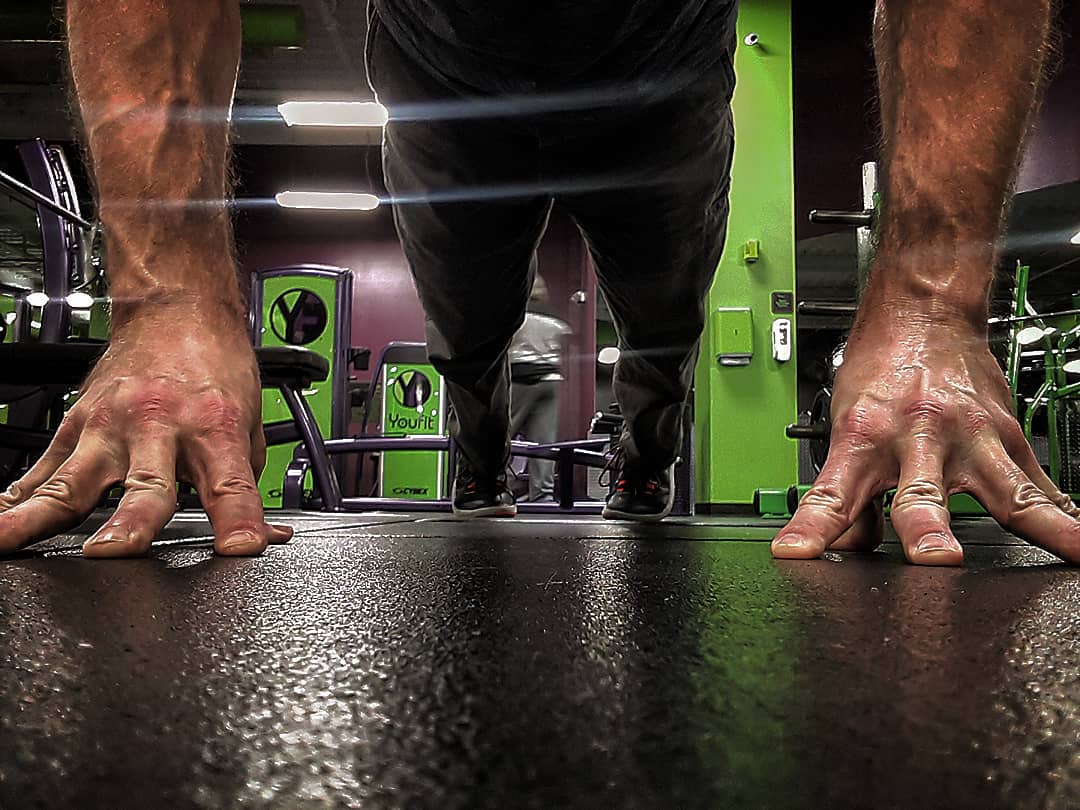
The Kinetic Chain: Breaking The Weak Link To Optimize Your Strength
The original publishing date of today’s post was back on September 14, 2017.
If you are serious about building a strong body from head to toe then you will love today’s article. The last thing you need in your training is a weak link and today I’m going to walk you through the process of eliminating weak links along with explaining to you the role of your kinetic chain.
Make sure you read and apply today’s message. Make sure to share this article with your family and friends!
Are you familiar with the kinetic chain?
- Have you been training your body to eliminate weak links?
- Are you currently battling with injury and tweaks throughout your body?
- Are you looking to strengthen every muscle in your body, or kinetic chain?
An illustration of the kinetic chain. When Achilles was a little baby his mother dipped him into a river of magic in order to protect him from the world. It worked because Achilles could not be harmed except on the one heel that his mother neglected to submerge in the water because of where she held him when she dipped him into the water.
Kinetic Chain: The Weak Link
Achilles was a mighty warrior that could not be stopped and was known for killing the famous Trojan prince Hector. However, some stories reveal that Hector’s younger brother Paris shot Achilles with an arrow in the heel that was neglected from the magic water which would end up killing him. Hence this is the origin of the name of the part of our heel that is the Achilles tendon.
In the realm of strength and conditioning and performance the goal for me is to train your body to be without weak links. My goal and intention is to be to build strength and performance for you without worry of breaking down with an injury due to a weak area of the body. This process is the whole point of training. Training should be intentional and purposeful with keeping this in mind whenever you walk into the gym, or hit your day’s training session.
As a strength coach I often end up examining a respective trainee and immediately hone in to find where they may have weaknesses. Now having said that the “achilles heel” may in fact be the literal weak link for a respective trainee, but figuratively speaking it could be something else entirely. It may not even be physical at all. It could be mental, or even emotional when it comes to addressing issues with a respective trainee.
Strengthening The Kinetic Chain
A smart strength and conditioning plan in my view integrates movements that emphasize stressing your agonist and antagonist muscles to optimize joint ROM. In other words you should strive to include movements that train both opposing muscles on a given joint. A good way to do this is by incorporating a push and pull method to your strength training. This is where you perform a push related movement and in turn perform a pull related movement. A brief example would doing a bench press followed by a pull up.
In addition to this I believe in training movement patterns initially with a closed kinetic chain movement to acquire the foundation of strength needed to develop this strong kinetic chain. So what is a closed kinetic chain movement? This is where your limb or extremity is in constant contact with an immovable surface. During a push up exercise your hands are in contact with the ground as an example. The ground isn’t moving.
Just to be clear the kinetic chain is the notion that joints and segments have an effect on one another during movement. Obviously when one segment is in motion, it creates a chain of events that affects the movement of neighboring joints and segments. Muscles are attached to bone and create this motion so any muscle that is restricted, or inhibited (tight, stiff, weak, etc.) will in practice cause a weak link in the kinetic chain and you can end up folding like a tent if you don’t correct the problem.
In life, or during more intense physical movement this breakdown with the presence of the weak link will cause a chain reaction resulting in greater stress on other segments, or muscles of your body. This compensation is inevitable in this context and is where an injury usually occurs with the individual, or athlete.
The Closed Kinetic Chain
So earlier I mentioned that initially I prefer using a closed kinetic chain exercise to build on the foundation of strength. To be clear a closed kinetic chain exercise involves physical exercises performed where the hand (for upper body and arm movement) or foot (for lower body leg movement) is fixed in space and cannot move. With this type of movement the extremity remains in constant contact with an immobile surface such as the ground, or at the base of a machine.
A good example here would be to look at the comparison of a push up versus a dumbbell bench press for the purpose of building upper body strength. The dumbbell bench press would be an example of an open kinetic chain movement because the resistance is not an immovable surface, but rather the arms are able to freely move the resistance…which in this case are the dumbbells. The dumbbells are freer to move around.
As I mentioned earlier when initially building on strength I personally prefer utilizing the closed kinetic chain of the push up movement to assess and to progress a trainee to building the necessary foundational strength needed to rid the body of any weak links. A push up is a great way to identify weak links in your chain.
I do this for a couple of reasons. First of all, the proper alignment and stability that is necessary throughout the line of tension required to hold your body in a proper upright push up position quickly becomes apparent with the push up exercise. By getting a respective trainee into an upright push up position I can quickly spot the areas of concern, or weak links along the chain.
A common issue I see in many trainees attempting a push up is collapsing the neck. Scapula (shoulder blades) instability causes this. In the photo below I’m purposely demonstrating a visible example of this breakdown as you will notice.
I’m collapsing my neck, head, and even my hips as there is a breakdown at my shoulder blades. This technical flaw is what I refer to as roostering. I call it this as the head tends to bob up and down like a rooster does when strutting. With this breakdown there is a failed attempt to keep my body rigid and properly aligned.
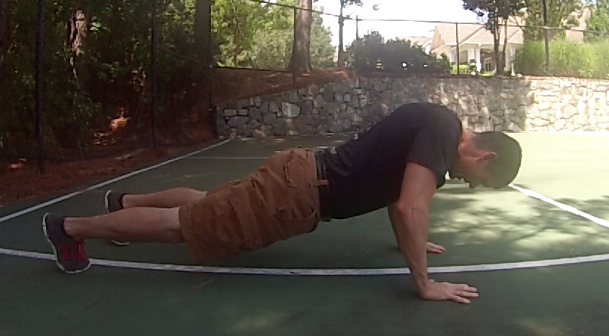
Allow me to help you build a strong kinetic chain by guiding through an efficient plan. To do this jump on my 120 Day Functional Fitness Program. Click the image!
With the push up exercise I can quickly assess this breakdown and correct it. I can use it to address proper alignment with the scapula and neck. To do this I would cue you to push the ground away when in the upright push up position. This forces a strong stabilizing scapula. This gets your neck and head back into proper alignment. I’m demonstrating that alignment here in the following photo. Notice the difference in my head and neck position between the two photos.
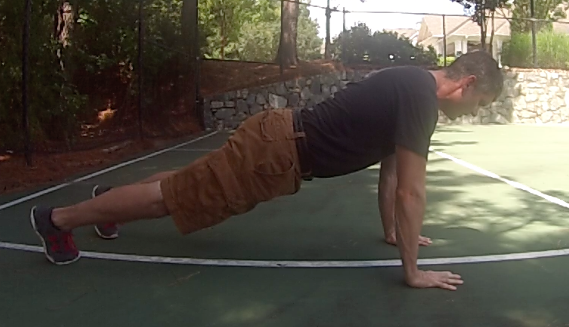
Stop wasting time and jump on my 120 Day Functional Fitness Program to build a strong kinetic chain. Just click the image here to order now!
Once again this is a quick fix in getting the “set up” of the push up correct. You want to do this before progressing any further into the movement. Of course variations and other adjustments can be made to a respective trainee if necessary. The push up is just one example of a solid closed kinetic chain movement. It’s great to assess and progress strength. It’s also great for you to start with if you’re looking to eliminate any possible weak links.
Kinetic Chain: The Takeaway
We all have our own “Achilles heel” to worry about when it comes to weaker areas of the body. It may, or may not be the Achilles tendon in the literal sense. You’ve got to be willing to figuratively attempt to cover your entire body in the magic water! Being indestructible may not be completely attainable, but you can surely strive to be.
Are you currently training your body to eliminate all of your weak links?
Have you ever examined your own push up exercise the way I demonstrated here?
What are you currently doing to optimize your strength and performance?
Please post up and share here in the comments below.
Learn how to tie this all together. Make sure you check out my brand new 120 Day Functional Fitness Training Program right here below!
CLICK HERE TO ORDER MY 120 DAY PLAN TO POWERFUL FUNCTIONAL FITNESS!!!
Click On Image Here
3 Must Have Single Leg Exercises For Strength And Stability
3 Functional Strength Drills For Fitness And Performance
4 Guaranteed Ways To Get A Functionally Strong Body
5 Unique Strength Drills To Enhance MMA Performance And Serious Fitness
3 Steps To Build Your Turkish Get Up For MMA
3 Push Up Variations To Give You Knock Out Punching Power For MMA And Combat
Click on all images below…
If you’re looking to enhance your fitness for MMA and martial arts then make sure to check out my
90 Day MMA Strength And Conditioning Program Here.
